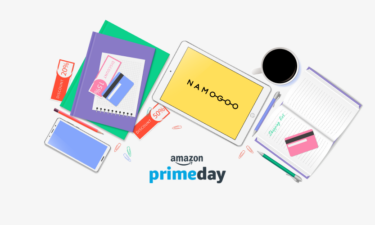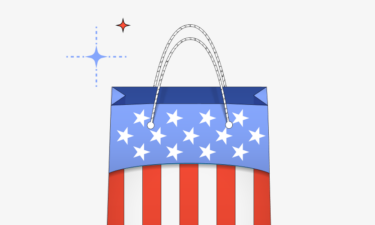What is Personalization in eCommerce?
eCommerce personalization is the practice of tailoring the online shopping experience for each individual consumer. This can include customizing the look and feel of the website, product recommendations, and targeted email marketing.
Personalization is beneficial for consumers as well as retailers. By focusing the online journey on products that are more likely to be relevant for that particular shopper, businesses can provide a superior shopping experience while driving more sales and building customer loyalty.
How eCommerce Personalization Works
To personalize a web experience, ecommerce companies need information about the shopper currently visiting the store. Where does this data come from?
Common Types of Data for Personalization
Zero-party data is data that is intentionally and proactively shared by customers. Companies would collect this data directly and explicitly – such as through surveys, online forms, or loyalty programs.
First-party data is data that is collected by a company about its own customers, based on their behavior in an app or a website (such as webpages they view, products they add to cart, and type of device they’re browsing from). This type of data can often be collected in real time, as the visitor is on the site.
Second-party data is collected by one company about the customers of another company, and might be shared between companies that have a business relationship. For example, a company that sells customer data to a marketing firm would be considered a second party data provider.
Third-party data is data that is collected by a company about customers that are not affiliated with the company. This data is typically collected through online data brokers or ad networks such as Facebook and Google. It is typically used to target ads and marketing campaigns.
Which Data Points are Collected?
There are a few different types of data that can be collected and used for personalization, including:
Web browsing: This includes information about the pages each shopper visits, how long they spend on each page, and what actions they take (such as clicking on links or adding items to their cart).
For example, if you have a lot of content on your website, you can identify visitors who came from an article about a certain type of product or an interest such as fashion, lifestyle, or fitness.
Purchase history: This obviously includes information about what products each website visitor has purchased in the past, but can also include information about what products they have viewed but not bought, and when they made their last purchase.
A visitor who has gotten close to purchasing a product, or is clearly comparing products in the same category, is sending intent signals that can be used to infer their shopping preferences.
Demographic information: This includes information like age, gender, location, and income level. This type of data might be harder to collect without third-party providers, but some attributes can be inferred by other data points such as the type of device the visitor is browning from.
Personalization Tactics and Strategies
The data we mentioned above can then be used to personalize the shopping experience in a few different ways, including:
- Product recommendations: This is probably the most common form of personalization, and is when visitors are shown products that are similar to what they have viewed or purchased in the past.
- Targeted emails and SMS: This is when businesses send emails that are specifically tailored to each individual shopper, based on their past behavior. For example, someone who has abandoned their cart might receive an email reminder about the items they were interested in, while a customer who just made a purchase might receive a coupon for their next purchase.
- Website customization: This is when the look and feel of the website is changed based on the shopper’s past behavior. For example, someone who has shown an interest in women’s clothing might see the women’s section of the website emphasized when they return, while a customer who has only ever looked at men’s clothing will see the men’s section emphasized.
Personalization vs Segmentation
While often used interchangeably, these terms denote two different processes:
- Segmentation involves categorizing and dividing customers based on similar attributes (age, device type, shopping behavior, etc.) The idea is that we can use data to identify certain cohorts – impulse shoppers, travelers, luxury brand lovers, etc. – and that these cohorts would share preferences or buying behaviors. This allows marketers to understand their audience and to craft campaigns, narratives, and offerings.
- Personalization focuses on the specific customer. Looking at data related to an individual shopper, an ecommerce website will attempt to match them to one or more of the segments they had already identified. Based on this information, as well as very specific behavioral signals collected during the same session, the website can produce a bespoke experience that’s tailored to that specific consumer.
Why Personalization? 4 Key Benefits
The goal of any store – on or offline – is to sell more products and build an audience of engaged brand advocates. Personalization can help you achieve these overarching goals by moving the needle on various other metrics, including:
- Higher conversion rates: Effective personalization puts more relevant products in front of buyers. It stands to reason that this would lead to more purchases – and the data is in agreement. Namogoo customers who use personalized email and text messages see an average uplift of 30% in revenue.
- Improved customer loyalty: A better shopping experience can improve customer loyalty and satisfaction. According to research by Accenture, 91% of consumers are more likely to buy from a retailer who recognizes them and provides relevant offers and recommendations (*). Similarly, Infosys has found that 78% of consumers said they would be more likely to re-engage with a brand if it offered personalized experiences (*).
Learn more: 4 to Improve Customer Retention - Increased average order value: Personalization allows you to upsell and cross-sell more effectively by taking unique attributes and behavior into account when recommending similar products. In a 2017 survey, nearly half of the respondents reported making an impulse purchase after receiving a personalized recommendation from a brand [*].
- More targeted marketing and ad spend: Many online brands are struggling with rising acquisition costs – and personalization can help make every marketing dollar spent go that extra bit further by ensuring that each consumer sees ads, products, and web content that is relevant for them.
Challenges for Personalization in 2023 and Beyond
As we’ve covered above, personalization is based on collecting data about shoppers and then using this data to provide a customized shopping experience. The problem many retailers currently face is in collecting the data.
Much of the data used for personalization purposes was traditionally collected via cookies – code snippets that allow websites to identify a returning visitor and build a profile of their behavior over time (even if they remain anonymous). However, cookie-based tracking, which used to be ubiquitous and based on an implicit opt-in buried in a website’s terms and conditions, is being challenged from multiple directions.
Legislation such as GDPR and CCPA have created much stronger opt-in requirements for cookie-based tracking on websites, while the privacy changes first introduced by Apple in iOS 14.5 [*] have created even greater challenges for in-app tracking. This significantly hinders the ability of retailers to collect relevant data, and as such – the possibilities they have when it comes to personalization.
Personalization in a Cookieless World
While cookie-based personalization is at risk of becoming obsolete, big data technology offers a solution. Rather than tracking individuals, retailers can infer a lot of information about website visitors using AI and predictive analytics – without relying on intrusive, privacy-breaking data collection – and personalize the experience for every segment of visitors they identify.
How does this work? Even when a visitor has refused any kind of cookie tracking, websites have non-personal data about the web visit happening right now (the current session). For example,you can tell:
- The web URL the visitor came from, including coupons or affiliate links.
- The device they’re browsing on – mobile or desktop, iPhone or Android – and additional information such as OS version.
- Environment performance such as CPU and network strength.
- The browser they’re using, and extensions they have installed – including ad blockers or shopping add-ons.
- Their journey through the website, the pages they visited, and whether they had multiple tabs open.
Machine learning offers the possibility to combine seemingly-minor data points across millions of converting and non-converting journeys. Over time, repeating patterns can be used to identify visitor segments -predicting their buying behavior based on the (anonymous) attributes they share with previous visitors.
Segmenting anonymous visitors unlocks the ability to offer a personalized experience without tracking visitors intrusively over months or years. Then you can surface the right offers at exactly the right time, based on the algorithm’s prediction of which offer is most likely to trigger conversions.
Learn More About eCommerce Personalization
- Need examples of how it works? Check our 7 marketing personalization examples that convert
- Running your store on Shopify? Read about the 5 ways Shopify stores can personalize the customer experience







